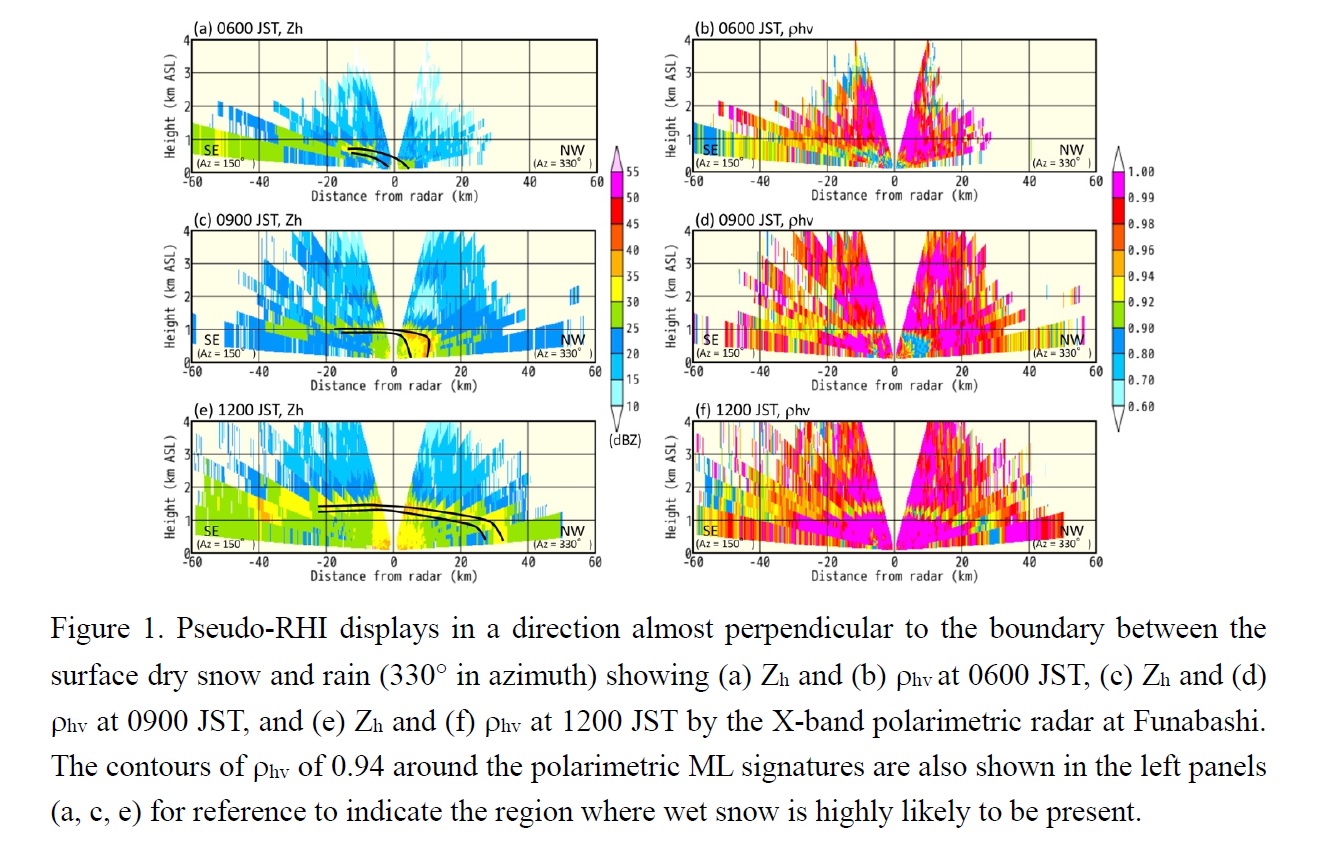Graphical Abstract
Shusse, Y., T. Maesaka, K. Kieda, and K. Iwanami, 2019: Polarimetric radar observation of the melting layer in a winter precipitation system associated with a south-coast cyclone in Japan. J. Meteor. Soc. Japan, 97, 375-385.
https://doi.org/10.2151/jmsj.2019-021
Graphical Abstract with highlights
Plain Language Summary: This study describes the spatial distribution of the melting layer (ML) in a winter stratiform precipitation system associated with a south-coast cyclone over the Kanto Plain using an X-band polarimetric radar at Funabashi. The detailed horizontal distribution of surface precipitation types based on weather reports from citizens was also investigated in relation to the ML structure. This study revealed the unique structure of the ML associated with a cold air mass in the lower atmosphere and suggested that the detection of the ML using polarimetric radars is effective for determining surface rainfall and snowfall areas.
Highlights:
- According to the weather reports, a clear boundary line between the surface dry snow and rain areas was present from the eastern part of Kanagawa to the northwestern part of Chiba during the mature snowfall period around Tokyo.
- The polarimetric ML signatures continuously observed above the rainfall area in the southeast of the Kanto Plain and approached the ground near the surface dry snow–rain boundary.
- The ML vertically extended below 1 km ASL near the surface dry snow–rain boundary, which indicates the presence of a local horizontal temperature gradient associated with a cold air mass in the lower atmosphere.







